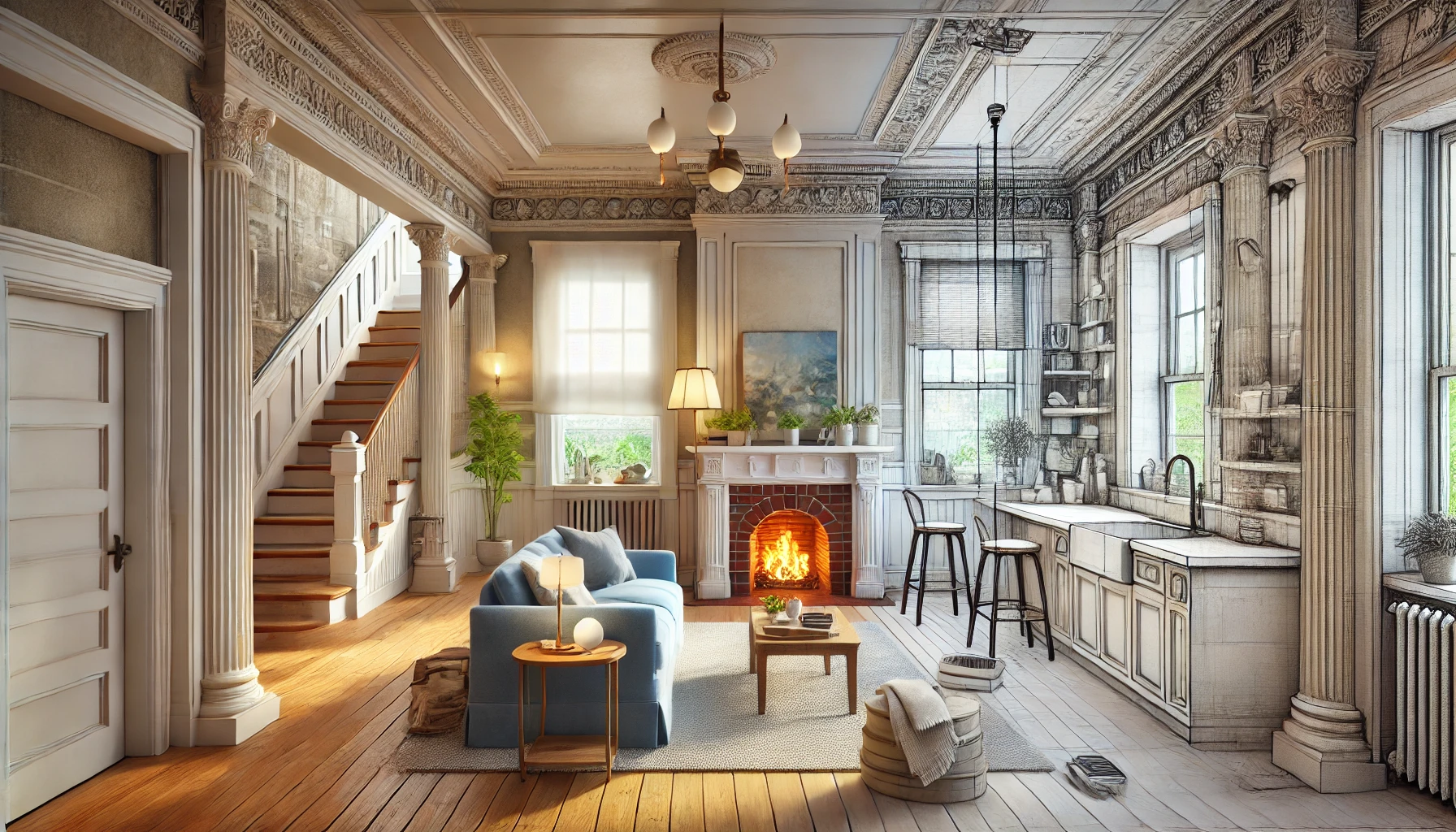Renovating an older home is a delicate process. While modern upgrades can make your home more functional and energy-efficient, it’s important to preserve the historical charm that makes older homes so special. Striking the right balance between the two is key to maintaining your home’s character while ensuring it meets modern living standards. Here’s how to approach the renovation of an older home, from updating essential systems to preserving its unique architectural details.
1. Assess the Home’s Structural Integrity
Before diving into renovations, it’s crucial to assess the structural integrity of the home. Older homes often come with their own set of challenges, including outdated foundations, weakened roofs, or compromised walls. Have a professional inspect the home to identify any areas that need repairs or reinforcement before beginning any aesthetic updates.
- Tip: Prioritize fixing any foundational or structural issues before moving on to cosmetic changes. This will save you from expensive repairs down the line and ensure your upgrades are built on a strong foundation.
2. Upgrade Electrical and Plumbing Systems
Many older homes have outdated electrical and plumbing systems that can’t handle the demands of modern appliances and devices. Replacing old wiring and plumbing not only makes the home safer but also ensures that it functions efficiently.
- Tip: When upgrading these systems, try to preserve original fixtures or use reproduction fixtures that match the home’s historical era. For example, antique faucets or vintage-style lighting can add a touch of authenticity while providing modern functionality.
3. Preserve Original Architectural Details
The charm of an older home often lies in its architectural details, such as crown molding, original hardwood floors, stained glass windows, or intricate trim. Whenever possible, preserve these elements during the renovation process. They’re part of what makes your home unique and can be difficult to replicate.
- Tip: If certain details are damaged, consider restoring them rather than replacing them. For example, original wood floors can often be refinished to bring them back to life, and old windows can be repaired rather than replaced to maintain the home’s historical charm.
4. Choose Historically Appropriate Materials
When upgrading materials in an older home, it’s important to choose options that complement the original design. This doesn’t mean you can’t incorporate modern materials, but try to select finishes that echo the period in which the home was built. This way, the upgrades blend seamlessly with the home’s original style.
- Tip: If your home has historical woodwork or masonry, work with a contractor experienced in restoring older homes. They’ll be able to source materials and finishes that align with the period while ensuring the home is up to modern standards.
5. Modernize Kitchens and Bathrooms Thoughtfully
Kitchens and bathrooms in older homes are often small and outdated, making them prime candidates for renovation. While it’s tempting to overhaul these spaces completely, it’s important to make upgrades that respect the home’s character. Opt for modern appliances and fixtures that complement, rather than clash with, the historical style.
- Tip: You can modernize kitchens and bathrooms by keeping some original elements, like tile or cabinetry, and blending them with modern amenities. For example, incorporating a vintage farmhouse sink in a kitchen with updated appliances can create a harmonious mix of old and new.
6. Enhance Energy Efficiency While Preserving Charm
Older homes often lack the energy efficiency of newer constructions, but that doesn’t mean you have to sacrifice charm to improve it. There are several ways to make an older home more energy-efficient without detracting from its historical appeal.
- Tip: Upgrade insulation in walls, attics, and floors without altering the home’s appearance. Choose energy-efficient windows that mimic the look of original windows. For added efficiency, consider sealing any drafts around doors and windows to reduce energy loss.
7. Incorporate Modern Technology Discreetly
While historical homes have character, modern living often demands smart technology, such as home automation systems, Wi-Fi connectivity, and security features. Incorporating modern technology in subtle ways allows you to enjoy the conveniences of today without disrupting the home’s vintage aesthetic.
- Tip: Hide wires and cables behind walls, and opt for smart home systems that blend into the background. Wireless devices and minimalist thermostats can provide modern functionality while maintaining the historical atmosphere of the home.
8. Respect the Home’s History
During the renovation process, it’s important to understand and respect the history of the home. Research the architectural style and historical period in which it was built to guide your renovation decisions. By doing so, you’ll be able to make choices that honor the home’s past while meeting modern needs.
- Tip: If your home has historical significance, consider working with preservation specialists or contractors experienced in historic home renovation. They can help you navigate the process and ensure that your upgrades comply with local preservation guidelines.
Conclusion
Renovating an older home requires a careful balance between modernizing for functionality and preserving the unique details that make the home special. By updating essential systems, using historically appropriate materials, and preserving original architectural features, you can enjoy the comforts of modern living while maintaining the charm and character of your historical home. With thoughtful planning and the right approach, your renovation will honor the home’s past and enhance its future.

